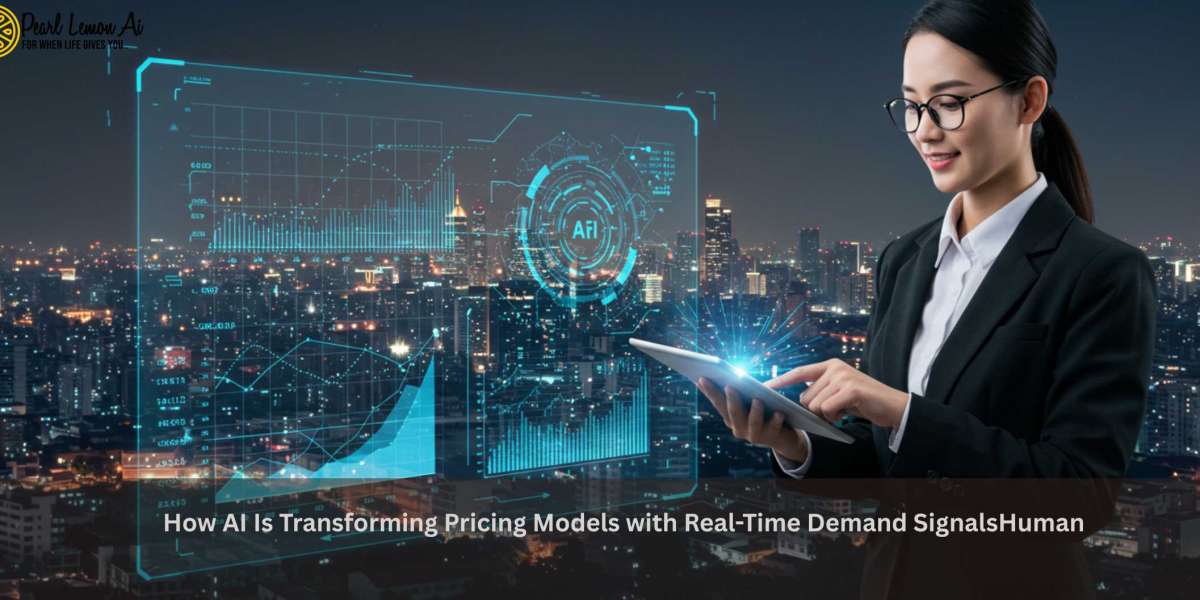Every week I sit down with business owners who ask me the same thing. Why is our pricing either too low to make real profit or too high to attract steady buyers? Why does our competitor seem to always nail it with theirs? It's a frustrating dance. Products are good, marketing is solid, yet conversions don’t align. I get it. Traditional pricing just doesn’t work anymore. Consumers today behave differently, and no two days look alike in sales. The biggest issue isn’t just the pricing strategy it’s the delay in reacting to market signals. We're pricing based on last quarter’s data while buyers are making decisions based on what’s happening right now. That gap? That’s what’s killing conversions.
How real-time adjustments help businesses stay ahead
When I started incorporating real-time demand data into our pricing structure, everything changed. Instead of sticking to monthly adjustments or outdated seasonal tactics, our pricing became alive responsive and smart. Revenue spiked, cart abandonment dropped, and most importantly, we stopped leaving money on the table.
Using artificial intelligence, I could see patterns that I had previously missed. Like how our mobile traffic spiked around 9pm, and how different demographics had vastly different willingness to pay. That shift powered by AI is what made the difference. It’s what we now call Intelligent Dynamic Pricing Strategies.
What are the core elements that AI uses to create pricing models?
I used to think pricing was about spreadsheets and market research reports. That’s outdated. Here’s what AI looks at in real time:
- Buyer intent through session activity
- Inventory levels across different regions
- Competitor pricing scraped from live online catalogs
- Purchase history and loyalty status
- Time-based behavioral cues like repeat evening shoppers
- Demand elasticity that shifts with external triggers
All these elements interact in milliseconds. The algorithms don’t just adjust price, they simulate outcomes. They’re asking: If I drop the price by 2 percent for 18–24 year olds in Manchester, will I move more stock or sacrifice margin?
Can AI actually understand human buying behavior?
I used to be skeptical. AI felt cold, robotic, and incapable of picking up emotional signals. But AI today doesn’t just process transactions it interprets actions.
For instance, one of our clients had a spike in cart adds but poor checkout rates. AI flagged this and tested micro-adjustments to prices for specific geolocations and devices. Within hours, sales began climbing. It wasn’t a guess it was data reacting in real time.
Some systems can even read cursor movement, scroll depth, and hover time to predict buying intent. These cues are incredibly valuable and often more accurate than self-reported data.
What types of businesses benefit most from real-time price models?
In my experience, some sectors are made for this shift. Here’s where I’ve seen the most success:
- Ecommerce with large inventories and fluctuating traffic
- Travel and hospitality where seat/room availability changes constantly
- Retail chains especially those using omnichannel strategies
- Subscription services testing pricing tiers on the fly
- Event platforms managing ticket demand curves pre-event
And even B2B SaaS companies are now adapting versions of this to test their feature-based plans with different cohorts.
Why traditional static pricing no longer works
Let me give you a real example. A fashion brand I consulted with was launching a seasonal line. They had a single fixed price across all channels. What they didn’t see was that women aged 30–45 were converting well at the original price in London but not in Leeds. Meanwhile, younger buyers responded better to time-based discounts after 6pm.
Static pricing missed this nuance. It assumed uniform behavior. But buyers today are anything but uniform.
How AI marketing tools fuel smarter pricing decisions
While pricing AI does the heavy lifting, we shouldn’t ignore how tools around it enhance the outcomes. That’s where AI Tools for Marketing Automation come into play.
They help segment audiences, predict campaign responses, and tie those insights directly into pricing logic. If the system sees that a group is 40 percent more likely to open a promotion email with urgency language, it can adjust both the campaign and price offer accordingly.
Here’s how this pairing works
- Marketing automation captures behavior and segments it
- Pricing AI responds by tailoring offers to those segments
- Both systems feed each other continuously
What role does machine learning play in improving accuracy?
Most AI pricing systems run on machine learning models. These models improve every time data flows through them. More data equals more accurate predictions.
We ran an experiment where the system was allowed to adjust only 5 percent of prices per day. Within 14 days, it had found five distinct buying patterns we never knew existed. It also identified price sensitivity for accessories based on the weather umbrella sales rose with cloudy forecasts before rain even began.
Key terms you need to understand to implement AI-based pricing
If you’re new to this, here are some important terms and what they mean in this context:
- Elasticity modeling understanding how demand changes with price shifts
- Real-time analytics data processed and acted on immediately
- Micro-segmentation targeting narrow audience slices with specific pricing
- Trigger-based adjustments setting pricing rules based on events like cart abandonment or location
- Price testing matrix automating A/B/C testing of multiple price points simultaneously
Are there ethical or legal concerns with AI pricing?
Absolutely. One of the early pitfalls we faced was perceived unfairness. For instance, if one customer sees a lower price than another for the same product, it can create trust issues.
We learned quickly that transparency is critical. Make sure your terms state that pricing may fluctuate based on supply, demand, and availability. Also, always maintain minimum price compliance if your products are regulated.
Does this work for small businesses or only large enterprises?
You don’t need Amazon-level infrastructure to make this work. There are tools now built specifically for smaller ecommerce brands and service providers.
What matters is choosing tools that:
- Integrate with your checkout or POS system
- Offer granular control (you set boundaries)
- Provide explainable outputs (so you understand the logic)
I’ve seen a boutique cosmetics brand increase their AOV by 26 percent just by adjusting bundle pricing in real time. They weren’t a tech company but they were smart about how they used technology.
What data should you feed into your pricing AI engine?
You want rich data diverse, recent, and contextual. Here’s what I typically recommend businesses sync with their pricing models:
- Live traffic behavior (session duration, click paths)
- Historical sales data (SKUs, seasons, channels)
- Customer profiles (age, geography, past orders)
- Channel performance (desktop vs mobile, email vs paid ads)
- External data (weather, competitor prices, events)
Feeding this into the system ensures decisions aren’t being made in isolation.
Is there a risk of customer pushback or confusion?
Only if it’s poorly implemented. We made mistakes early on prices fluctuated too often, and it confused loyal customers. We fixed that by setting floors and ceilings for each product and making the pricing shifts subtler.
Customers are used to price variations. Airlines have been doing this for years. As long as your prices don’t seem random and you’re not gouging, most buyers are fine with it especially when they feel they’re getting value.
Are there performance benchmarks to measure success?
Yes and they’re critical. You need to track
- Conversion rate changes by cohort
- Average order value increases
- Time-to-sale reduction
- Inventory turnover improvements
- Revenue per visitor gains
Use dashboards to monitor these in near real time. When one metric improves but another drops, you need to re-calibrate.
Can AI adjust prices across multiple sales channels simultaneously?
Absolutely. Today’s systems are built to sync across:
- Your ecommerce platform
- Third-party marketplaces
- In-store POS terminals
- Mobile apps
That’s essential. Without synchronization, you create pricing mismatches that lead to abandoned carts or frustrated customers.
Conclusion
AI-driven pricing isn’t about tricking people it’s about being responsive to demand and delivering better value. When your pricing responds in real time to what your customers want and how they behave, you’re not just selling you’re understanding.
While the term Intelligent Dynamic Pricing Strategies may sound technical, the concept is simple: let your prices breathe. Let them move with your market. That’s what leads to higher profits, stronger loyalty, and more efficient operations.
Whether you’re running a Shopify store or managing multiple enterprise channels, AI pricing tools can help you break free from rigid pricing models. It’s not magic. It’s just smarter business.








